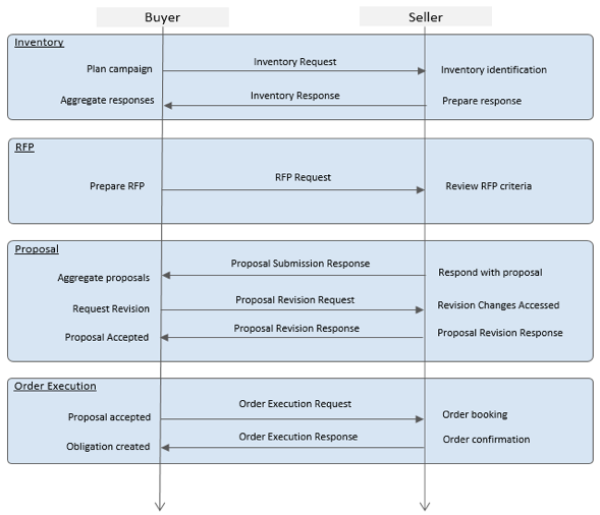Commentary
Local Broadcast 'Interface' Initiative Is Like Deja Vu All Over Again
- by Joe Mandese @mp_joemandese, November 20, 2017
There's something ironic about a plan being announced this morning by a consortium of local TV broadcasters to develop a standard interface to accelerate electronic trading with advertisers and agencies. The irony is that electronic media trading began with local broadcasters and it is now coming full circle.
Remember “electronic data interchange”? No? How about “eBiz"? Not that either? Well, those were the ad industry’s earliest attempts to trade media electronically -- beginning with avail requests and then on through invoices, verification and payments and posting.
Of course, some of these processes have already gone digital, especially the back-end parts powered by the likes of Mediaocean.
For those who don't recall, it was in the late '90s, up through the dot-com crash of 2000, when much of the attention in electronic trading was on traditional media, especially broadcast -- not digital.
Following the dot-com crash, many of those traditional media trading initiatives floundered or went dormant, but digital marched along, especially Google’s structuring of the paid search marketplace via AdWords, and ultimately the emergence of a biddable digital display advertising marketplace.
A couple of decades later, broadcasters are back at it. The consortium announced this morning the TIP Initiative. (TIP is an acronym that stands for TV Interface Practices.)
The group, including Nexstar Media, Sinclair Broadcast, TEGNA and Tribune Media, says the renewed effort recognizes that “local TV industry has struggled with the manual nature of the advertising buying and selling process for many years.”
Given the speed with which the industry has embraced electronic trading its first couple of decades, I’d say the struggle will continue for many more years, except I happen to know about some other concurrent efforts.
Also, there's the fact that if local broadcast media cannot adopt to electronic trading, it will become increasingly irrelevant. More on that another time.
In the meantime, TIP’s organizers say they are building their protocol around the following principles:
Local television is the most powerful brand-building medium, connecting marketers with consumers and advertisers. Both brands and broadcasters will benefit from the best automation.
While demand is high for local television ad inventory, transactional friction has created challenges for buyers.
System-to-system electronic processes can streamline the buying of local spot media; however, creating interoperability takes coordination across multiple broadcast companies.
Standards-based interfaces are the best way of encouraging the needed system-to-system interchange of transactional information.
Standard API interfaces set the stage for advanced local TV and ATSC 3.0, and will greatly enhance the efficiency of buying local media by U.S. advertising agencies.





Joe, I don't know if anyone remembers but way back----like about fifty years ago--- Arbitron tried to set up an electronic spot TV avail and rating analysis system, using Arbitron TV ratings as the currency for local market TV buys. Sellers were supposed to submit their avails and costs to the program while the agencies used Arbitron ratings to calculate GRPs, CPMs, etc. then repond to the sellers in what was described as an "advanced" ----that word again-----time buying system. The proposal never got off the ground due to seller resistance as well as numerous issues---like how do you use old data to predict future ratings, whether sellers would guarantee delivery, etc. In reality, this was a ploy to lock in Arbitron as the rating service of choice at a time when Nielsen was making strong inroads in the local market measurement field and challenging Arbitron's dominance. We all know how that turned out.
Always been some reason to not "do it". Still are reasons. But the "stick" exists this time. If they don't do it this time around, they risk becoming archaic in today's media world where these types of technologies are becoming the norm for other mediums.
Wow, great memory Ed. That one predates me. If I could speak for some or our younger readers, they would say, "What's Arbitron?"
The industry is, indeed, evolving and embracing technology-driven solutions in the spot TV space and the shift to more open standards is also growing momentum. We encourage local broadcasters to lean into a new way of transacting deals. At Videa, we work strategically alongside sellers and buyers to help them better target audiences as consumers’ behavioral habits become increasingly omni-channel. Additionally, we continue to see real movement and dollars come through our platform and this TIP Initiative is a natural outcome of the need to adopt open standards and practices to drive the growth of advanced TV.
Joe - If you’d like to talk with Shereta on this TIP announcement (or open standards in general) please let me know and I can arrange that.